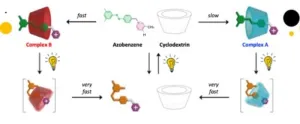“This adds to some emerging evidence that an individual’s brain structure, alongside their unique genetics, environmental exposures, and interactions among these factors, may impact their level of risk and resilience for substance use and addiction,” said Nora Volkow M.D., director of NIDA. “Understanding the complex interplay between the factors that contribute and that protect against drug use is crucial for informing effective prevention interventions and providing support for those who may be most vulnerable.”
Among the 3,460 adolescents who initiated substances before age 15, most (90.2%) reported trying alcohol, with considerable overlap with nicotine and/or cannabis use; 61.5% and 52.4% of kids initiating nicotine and cannabis, respectively, also reported initiating alcohol. Substance initiation was associated with a variety of brain-wide (global) as well as more regional structural differences primarily involving the cortex, some of which were substance-specific. While these data could someday help inform clinical prevention strategies, the researchers emphasize that brain structure alone cannot predict substance use during adolescence, and that these data should not be used as a diagnostic tool.
The study, published in JAMA Network Open, used data from the Adolescent Brain Cognitive Development Study, (ABCD Study), the largest longitudinal study of brain development and health in children and adolescents in the United States, which is supported by the NIH’s National Institute on Drug Abuse (NIDA) and nine other institutes, centers, and offices.
Using data from the ABCD Study, researchers from Washington University in St. Louis assessed MRI scans taken of 9,804 children across the U.S. when they were ages 9 to 11 – at “baseline” – and followed the participants over three years to determine whether certain aspects of brain structure captured in the baseline MRIs were associated with early substance initiation. They monitored for alcohol, nicotine, and/or cannabis use, the most common substances used in early adolescence, as well as use of other illicit substances. The researchers compared MRIs of 3,460 participants who reported substance initiation before age 15 from 2016 to 2021 to those who did not (6,344).
They assessed both global and regional differences in brain structure, looking at measures like volume, thickness, depth of brain folds, and surface area, primarily in the brain cortex. The cortex is the outermost layer of the brain, tightly packed with neurons and responsible for many higher-level processes, including learning, sensation, memory, language, emotion, and decision-making. Specific characteristics and differences in these structures – measured by thickness, surface area, and volume – have been linked to variability in cognitive abilities and neurological conditions.
The researchers identified five brain structural differences at the global level between those who reported substance initiation before the age of 15 and those who did not. These included greater total brain volume and greater subcortical volume in those who indicated substance initiation. An additional 39 brain structure differences were found at the regional level, with approximately 56% of the regional variation involving cortical thickness. Some brain structural differences also appeared unique to the type of substance used.
In a post-hoc analysis, the researchers found that many of these brain differences still held even after removing those participants who reported substance initiation prior to collection of their baseline MRIs. The resulting comparison was between those who did not report any substance use initiation and a subgroup of 1,203 participants in the substance use initiation group who did not have any substance use experience when their MRIs were first captured. The results of this secondary analysis suggest that some of these brain structural differences may exist prior to any substance use, challenging the interpretation that such differences are only driven by substance exposure and pointing to an area for further investigation.
While some of the brain regions where differences were identified have been linked to sensation-seeking and impulsivity, the researchers note that more work is needed to delineate how these structural differences may translate to differences in brain function or behaviors. They also emphasize that the interplay between genetics, environment, brain structure, the prenatal environment, and behavior influence affect behaviors.
Another recent analysis of data from the ABCD study conducted by the University of Michigan demonstrates this interplay, showing that patterns of functional brain connectivity in early adolescence could predict substance use initiation in youth, and that these trajectories were likely influenced by exposure to pollution.
Future studies will be crucial to determine how initial brain structure differences may change as children age and with continued substance use or development of substance use disorder.
“Through the ABCD study, we have a robust and large database of longitudinal data to go beyond previous neuroimaging research to understand the bidirectional relationship between brain structure and substance use,” said Alex Miller, Ph.D., the study’s corresponding author and an assistant professor of psychiatry at Indiana University. “The hope is that these types of studies, in conjunction with other data on environmental exposures and genetic risk, could help change how we think about the development of substance use disorders and inform more accurate models of addiction moving forward.”
If you or someone you know is struggling or in crisis, help is available. Call or text 988 or chat at 988lifeline.org. To learn how to get support for mental health, drug or alcohol conditions, visit FindSupport.gov. If you are ready to locate a treatment facility or provider, you can go directly to FindTreatment.gov or call 800-662-HELP (4357).
The Adolescent Brain Cognitive Development Study and ABCD Study are registered service marks and trademarks, respectively, of the U.S. Department of Health and Human Services.
Reference: AP Miller, et al. Neuroanatomical variability and substance use initiation in late childhood and early adolescence. JAMA Network Open. DOI: 10.1001/jamanetworkopen.2024.52027 (2024).
###
About the National Institute on Drug Abuse (NIDA): NIDA is a component of the National Institutes of Health, U.S. Department of Health and Human Services. NIDA supports most of the world’s research on the health aspects of drug use and addiction. The Institute carries out a large variety of programs to inform policy, improve practice, and advance addiction science. For more information about NIDA and its programs, visit www.nida.nih.gov.
About the National Institutes of Health (NIH): NIH, the nation’s medical research agency, includes 27 Institutes and Centers and is a component of the U.S. Department of Health and Human Services. NIH is the primary federal agency conducting and supporting basic, clinical, and translational medical research, and is investigating the causes, treatments, and cures for both common and rare diseases. For more information about NIH and its programs, visit www.nih.gov.
About substance use disorders: Substance use disorders are chronic, treatable conditions from which people can recover. In 2023, nearly 49 million people in the United States had at least one substance use disorder. Substance use disorders are defined in part by continued use of substances despite negative consequences. They are also relapsing conditions, in which periods of abstinence (not using substances) can be followed by a return to use. Stigma can make individuals with substance use disorders less likely to seek treatment. Using preferred language can help accurately report on substance use and addiction. View NIDA’s online guide.
NIH…Turning Discovery Into Health®
END


